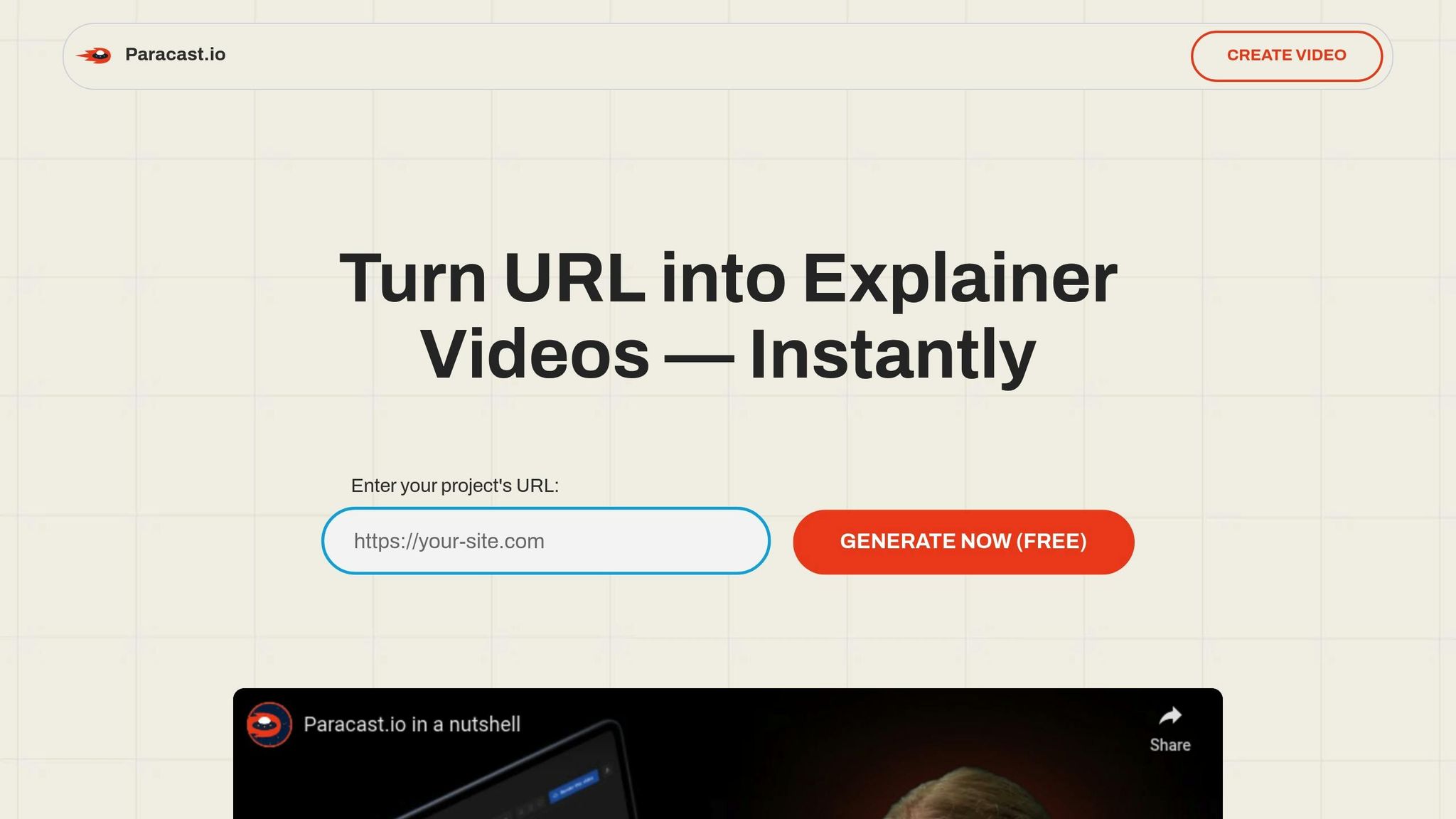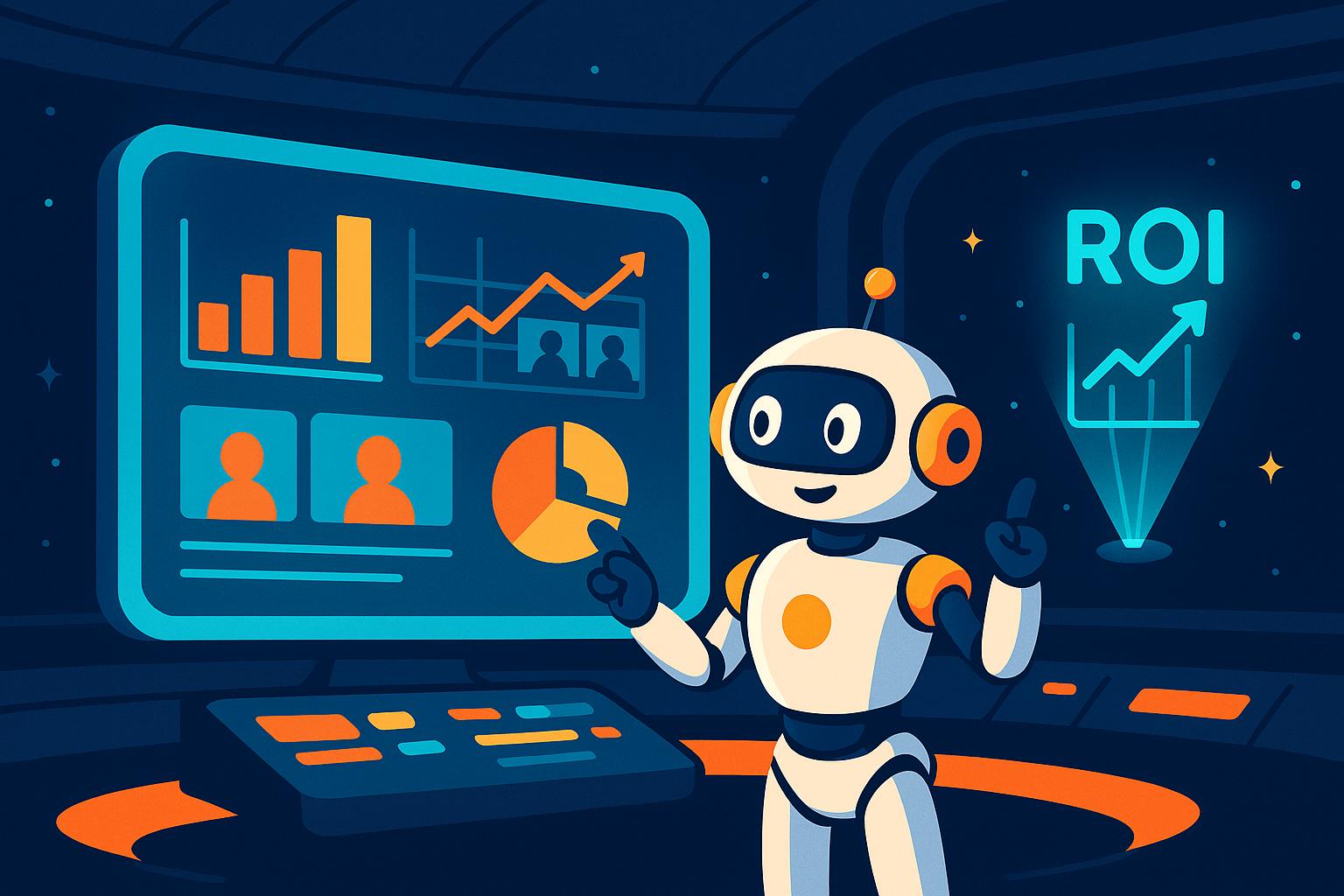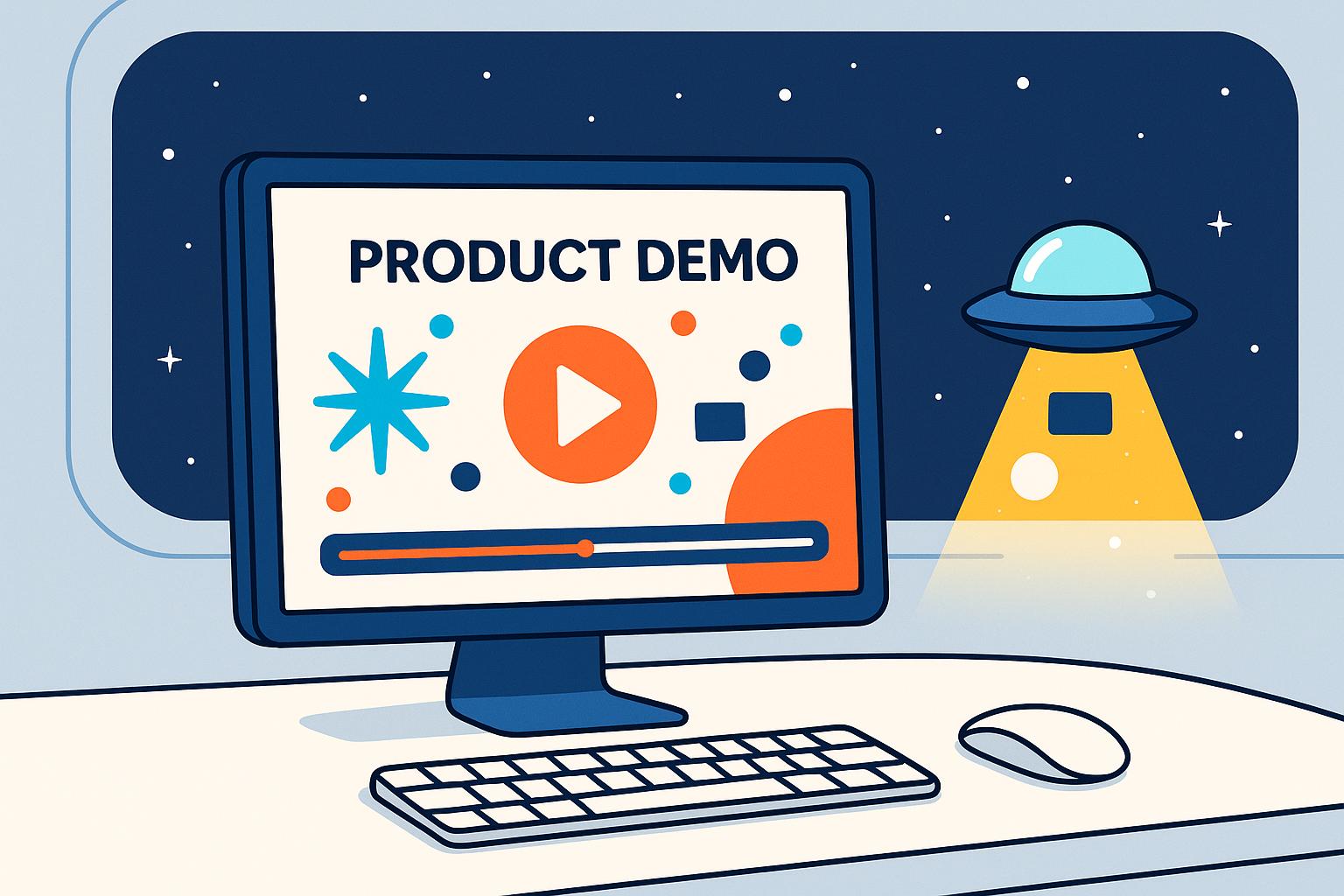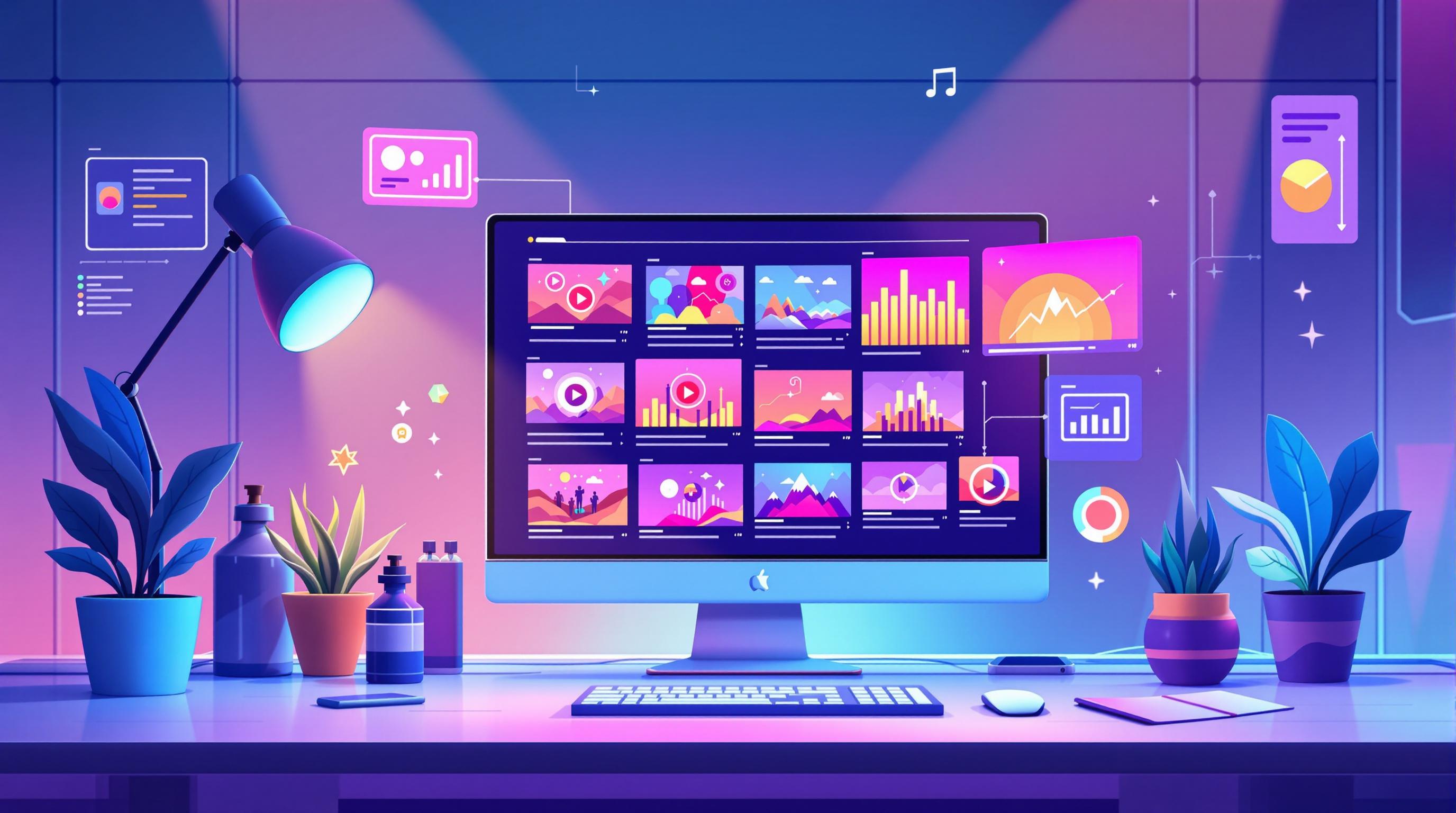AI is reshaping how we analyze audience behavior in video marketing. By examining metrics like watch time, drop-off rates, and engagement patterns, AI identifies what keeps viewers interested and predicts their actions. Technologies like machine learning, deep learning, computer vision, and natural language processing work together to uncover trends, optimize content, and improve viewer retention.
Key takeaways:
- Machine learning tracks engagement trends such as click-through rates and video completion.
- Deep learning analyzes multiple factors like demographics and content themes to refine predictions.
- Computer vision assesses visual elements like facial expressions and scene transitions to pinpoint what holds attention.
- Natural language processing (NLP) evaluates speech, captions, and comments to gauge sentiment and audience preferences.
Marketers use these insights to create tailored content, improve video performance, and achieve better results. Platforms like Paracast.io make it easier for businesses to leverage AI by offering tools for creating, analyzing, and refining videos based on audience data.
Free AI Video Analysis: Google's Hidden Tool Revealed | No Coding Required!
AI Technologies That Power Audience Prediction
Modern video analytics rely on a set of powerful AI technologies to predict audience behavior, turning raw data into actionable insights. At the heart of this process are four key technologies: machine learning, deep learning, computer vision, and natural language processing. Each plays a unique role in analyzing viewer data and providing meaningful predictions.
Machine learning uncovers broad engagement trends, computer vision identifies visual elements that capture attention, natural language processing interprets spoken and written content, and deep learning integrates all these data points to deliver precise predictions. Let’s break down how each of these technologies contributes to audience prediction.
Machine Learning and Deep Learning
Machine learning and deep learning are essential for finding patterns and relationships in audience behavior.
Machine learning focuses on identifying trends in large datasets. It analyzes metrics like watch time, click-through rates, and video completion percentages to determine what keeps viewers engaged. These algorithms improve over time, learning from every new interaction to refine their predictions.
Deep learning, on the other hand, goes deeper by processing multiple layers of information at once. Using neural networks, it connects factors like viewer demographics, content themes, video length, and engagement metrics. This level of analysis helps identify subtle differences in how different groups interact with various video formats.
For example, deep learning can predict how audiences will respond to different types of videos - like talking head presentations, animated explainers, or product demos - and recommend the best format for specific marketing objectives. It also pinpoints moments when viewer attention drops, enabling marketers to adjust pacing, content placement, or even video length to improve retention.
Deep learning models excel at processing temporal data, meaning they track how viewer behavior evolves throughout a video. This allows for insights into the best video length, strategic placement of calls-to-action, and the key elements needed in the first 15 seconds to maximize viewer retention.
Computer Vision and Natural Language Processing
Computer vision focuses on analyzing visual elements that influence viewer engagement. It examines details like facial expressions, body language, color schemes, text overlays, and scene transitions to determine what resonates most with audiences. For instance, it can identify when viewers are likely to pause, rewind, or skip ahead based solely on visual cues.
This technology also uses tools like heat mapping and gaze tracking (when available) to understand where viewers focus their attention on the screen. For marketing videos, this means identifying whether product shots, presenter close-ups, or animated graphics are most effective at holding attention.
Natural language processing (NLP), meanwhile, interprets spoken dialogue, captions, and viewer comments to gauge sentiment and engagement. It analyzes keywords, phrases, and topics to determine what sparks positive reactions or causes viewers to disengage.
By pairing NLP with sentiment analysis, marketers can predict whether a direct sales pitch or a storytelling approach will perform better for specific audiences. NLP also dives into comment sections and social media to assess how video content influences brand perception and purchase intent.
NLP is particularly valuable for handling multilingual content and understanding regional differences in global campaigns. It identifies how messaging resonates in different markets, helping marketers fine-tune content for specific audiences and improve localization strategies. Together, these technologies provide marketers with the tools to create highly targeted and engaging video content.
Step-by-Step: How AI Predicts Audience Behavior
AI takes raw video data and turns it into practical insights through a series of carefully designed steps. Each phase builds on the last, fine-tuning the predictions about audience behavior.
Data Collection and Preprocessing
The process starts with gathering data from a variety of sources. AI systems pull in engagement metrics like watch time, pause points, replay sections, and drop-off rates from video platforms. They also collect information about demographics, including age, location, device type, and viewing times.
In addition to this, AI tracks behavior signals such as click patterns, comment sentiment, and social sharing activity. For interactive videos, it even analyzes how users engage with the video player.
Engagement metrics like watch time and drop-off rates are particularly important, but they need refining. AI algorithms step in to clean the data - removing duplicates, filtering out bot traffic, and standardizing data formats across platforms. They also align time zones to reflect when viewers are actually engaging. This ensures accurate comparisons, even in cases where repetitive viewing might otherwise skew the numbers.
Feature Extraction and Pattern Recognition
Once the data is cleaned, AI shifts its focus to identifying the factors that influence viewer behavior. This step, called feature extraction, looks at things like video length, visual elements, and audio characteristics. Simultaneously, pattern recognition uncovers trends in how viewers engage.
AI pinpoints video segments that hold audience attention and categorizes viewers into groups based on their behavior. It also maps the viewer's journey - from first discovering the video to engaging with it - helping predict which audiences are most likely to take actions like clicking a link or completing the video.
Prediction and Insights
After identifying key features and patterns, AI uses this information to make detailed predictions. Based on the analyzed data, AI models generate insights with probability scores, estimating outcomes like whether someone will finish a video, interact with a call-to-action, or share the content.
These insights are then translated into actionable recommendations for optimizing videos. For example, AI might suggest tweaking video length, adjusting publishing times, or reworking content structure to better align with audience behavior. By continuously comparing predictions to actual results, AI systems improve their accuracy over time.
For marketers using tools like Paracast.io, these AI-driven insights can guide decisions on everything from choosing video templates to setting publishing schedules. The result? Promotional videos that are fine-tuned to resonate with audience preferences and drive engagement.
sbb-itb-5bfa442
How Marketers Use AI Audience Insights
AI-powered audience insights give marketers the tools to design video campaigns that truly connect with their target audiences. By turning AI-generated predictions into actionable strategies, marketers can boost engagement and improve campaign outcomes. This approach allows for more precise audience segmentation and personalized content strategies.
Content Personalization and Audience Segmentation
Gone are the days of generic, one-size-fits-all marketing. With AI audience insights, marketers can dive deeper into viewer behaviors and preferences to create personalized video experiences for specific audience groups.
AI-driven segmentation goes beyond basic demographics. It identifies behavioral patterns, such as how deeply viewers engage with certain types of content. For instance, AI might reveal that viewers who watch product demo videos in full are more likely to make a purchase, while those who skim through content may have different buying habits.
This level of insight helps marketers design tailored content journeys. For example:
- Viewers with shorter attention spans might respond better to quick, action-oriented videos with early calls-to-action.
- More engaged viewers could benefit from longer, in-depth videos that build a stronger connection with the brand.
AI also supports dynamic content optimization by pinpointing which video elements resonate most with each segment. Whether it’s customer testimonials, product showcases, or behind-the-scenes footage, marketers can adjust video templates and messaging to maximize impact. Additionally, AI can determine the best times to release content for each audience group, ensuring videos reach viewers when they’re most likely to engage.
Campaign Optimization and ROI Improvement
AI insights don’t just enhance content - they also sharpen overall campaign strategies and resource allocation.
Instead of spreading budgets evenly, marketers can use AI to identify high-value audience groups and focus resources where they’ll deliver the best return. For example, if AI shows different engagement patterns between mobile and desktop viewers, marketers can tailor video lengths and formats accordingly.
AI predictions also help optimize budgets and forecast campaign performance. By directing efforts toward high-impact areas, marketers can minimize wasted resources and make more informed decisions.
Cross-platform optimization is another key benefit. AI insights can reveal which types of content work best on different channels. For instance:
- Professional networks might favor educational or informative videos.
- Visual platforms may see higher engagement with behind-the-scenes or lifestyle-focused content.
This knowledge allows marketers to fine-tune their strategies for each platform while maintaining a cohesive brand message.
Trend Identification and Planning
AI audience insights also help marketers anticipate shifts in viewer preferences and plan future campaigns more effectively.
For example, AI might detect an increasing preference for videos with captions, signaling an opportunity to adapt content for accessibility. Seasonal trends are another area where AI shines, guiding marketers on when to schedule campaigns or refresh their content.
AI can also identify patterns in video performance. Some videos may generate a quick burst of engagement, while others enjoy steady viewership over time. Understanding these trends helps marketers decide when to update content and how to structure their publishing schedules for maximum impact.
Finally, AI provides a competitive edge by analyzing industry-wide audience trends. Marketers can see which types of content are gaining popularity and adjust their strategies to align with emerging opportunities.
For users of platforms like Paracast.io, these insights are invaluable. The platform’s AI-enhanced video creation tools, informed by audience behavior predictions, empower marketers to craft promotional videos that resonate with viewers and encourage meaningful engagement.
Using Paracast.io for AI-Driven Video Marketing

Paracast.io takes AI-powered insights and turns them into practical tools for video marketing. It's a platform designed to help startups, agencies, freelancers, and small teams create videos that truly resonate with their target audiences. By using AI to transform data into actionable strategies, Paracast.io makes video production both affordable and accessible, even for those with limited expertise.
AI-Powered Video Creation Made Simple
Creating videos with Paracast.io is straightforward. The platform can generate promotional videos directly from website URLs. By analyzing the content of a site, it produces videos that align with the brand's voice and meet audience expectations. It also offers a variety of pre-designed templates tailored for different needs, such as product demos, feature announcements, partnerships, milestones, and social media campaigns. These templates are fully customizable through an easy-to-use editing interface, making it simple to adapt videos to specific goals.
Refining Videos with Audience Insights
Paracast.io empowers marketers to experiment with different video styles. With unlimited creation and download options, users can test various approaches without restrictions. The platform ensures all videos meet professional standards with 1080p HD quality, allowing for a polished final product. This flexibility supports a data-driven approach, enabling marketers to fine-tune messaging and maximize impact. By combining creative freedom with data insights, Paracast.io helps businesses achieve better results in their campaigns.
Designed for U.S. Businesses
Paracast.io is tailored to meet the needs of U.S. businesses. It offers clear, monthly subscription plans priced in USD, making budgeting straightforward. The Maker plan, priced at $20 per month, is ideal for indie creators and small teams, while the Pro plan, at $80 per month, removes watermarks and suits businesses with established revenue streams. Additionally, the platform operates within U.S. time zones, ensuring support and scheduling align with peak engagement hours. Paracast.io helps businesses maintain consistent branding across channels while leveraging AI insights to boost video marketing success.
Conclusion: AI's Role in Video Marketing Success
AI is reshaping how businesses engage with their audiences by offering precise, data-backed predictions of viewer behavior. These advanced capabilities allow for smarter audience segmentation, tailored content personalization, and real-time tweaks that lead to noticeable ROI gains. Tools like Paracast.io are at the forefront, bringing these benefits to businesses across the U.S.
For companies looking for AI solutions that are both powerful and easy to use, Paracast.io stands out. Historically, accessing advanced AI tools often required deep technical knowledge and came with a hefty price tag. Paracast.io changes the game, offering affordable plans starting at just $20 per month. This makes high-quality, AI-powered video marketing tools accessible to businesses of all sizes - not just the big players.
What sets Paracast.io apart is its ability to create promotional videos directly from a website URL. Add to that a range of customizable templates designed for different business needs, and you’ve got a practical solution for marketers. Whether it’s product demos, feature announcements, or social media campaigns, the platform helps users produce polished, professional videos that align with audience preferences.
As video content continues to dominate digital marketing, merging AI-driven insights with efficient production tools is no longer optional - it’s essential. AI isn’t just helping us understand audiences better; it’s changing the way we create, refine, and deliver video content that connects with viewers in today’s crowded digital space.
FAQs
How does AI predict audience behavior in video marketing?
AI helps predict audience behavior in video marketing by studying patterns in user engagement, demographics, browsing habits, and previous interactions. Machine learning plays a key role here, identifying trends and using this information to anticipate future actions. This allows marketers to craft campaigns that are more focused and efficient.
Deep learning pushes things even further by constantly learning from new data. This enables the creation of hyper-personalized content and highly precise audience targeting. The outcome? Campaigns perform better, audiences stay more engaged, and viewers enjoy a more tailored experience.
How does AI use computer vision to analyze viewer engagement in videos?
AI uses computer vision to study how viewers engage with video content by analyzing visual cues such as facial expressions, body movements, and where their gaze is directed. This helps uncover emotional reactions and attention levels, offering a clearer picture of how audiences connect with the material.
On top of that, computer vision can monitor real-time interactions with virtual elements, delivering useful insights into viewer behavior. This data empowers creators to fine-tune their videos, making them more impactful and aligned with their audience’s preferences.
How can AI help marketers boost video campaign performance and maximize ROI?
AI gives marketers the tools to take video campaigns to the next level by diving deep into audience behavior and preferences. By analyzing how viewers engage with content, AI helps craft personalized and highly targeted videos that boost engagement and conversion rates.
On top of that, AI can forecast which audience segments and creative elements will perform best. This means marketers can fine-tune their ad spend and prioritize strategies that deliver the best results. With real-time analytics, powered by AI, campaigns can be adjusted on the fly, keeping content relevant and effective every step of the way.


